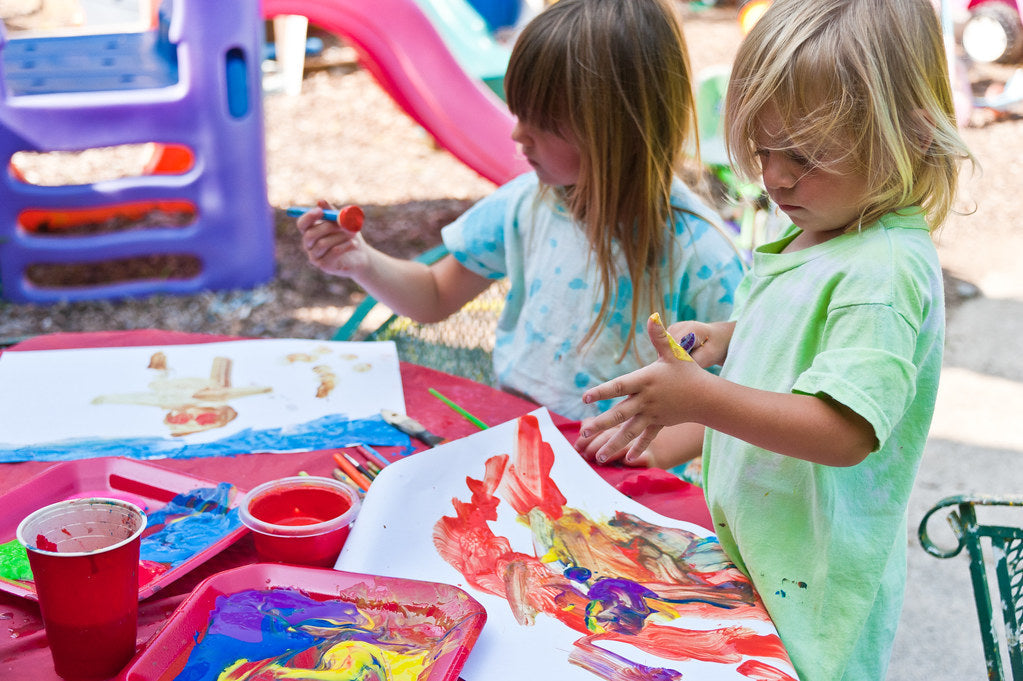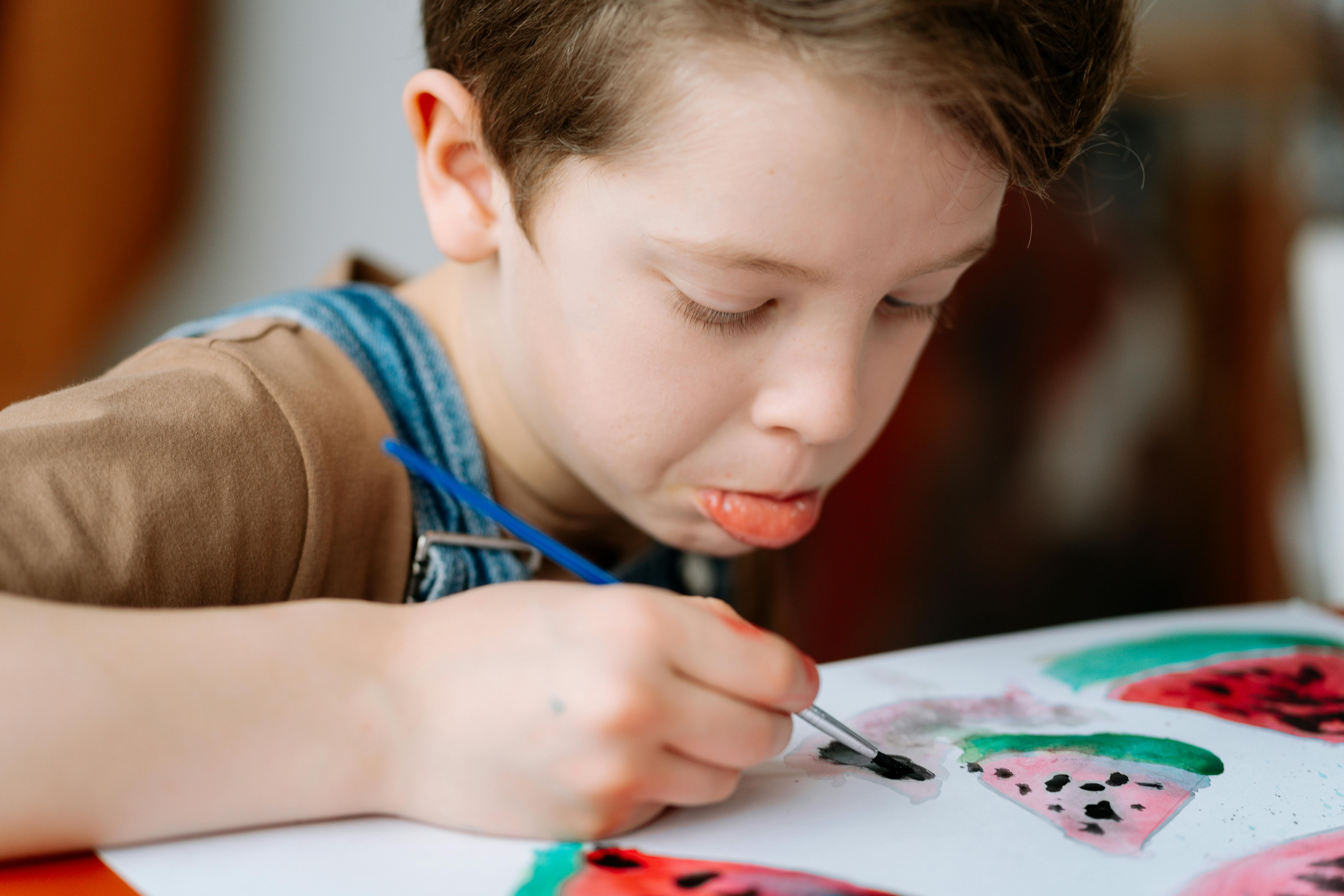
10 Ways to Add Creativity to Your Child’s Day
First, let’s talk about what creativity is and isn’t.
Creativity is the forming and implementation of original thoughts and ideas. Creativity is not about being a great artist or an amazing author, although chances are those people are using their creativity on a daily basis.
According to Robert S. Root-Bernstein and Michele Root-Bernstein, co-authors of Sparks of Genius: The Thirteen Thinking Tools of the World’s Most Creative People, “creativity isn’t born, it’s cultivated.”
The good news is that you can’t use up creativity! It’s like a muscle. The more you use it, the stronger it becomes.
Take a Hike (or a Walk)
Take a walk outside and play “I Spy” for different colors and shapes. Steve Jobs felt that creativity was just “connecting things.” Helping your kids notice things around them leads to more creativity. Looking for patterns is a great activity. On your walk, look for some common patterns found in nature like spirals on cone flowers, the way branches grow from tree trunks, or how fungi grows. Staying curious is a great way to see connections between things that others might not.

Doodle Together
Post-it notes offer a different kind of structure because of their size limitations. It’s fun and easy to draw self-portraits on Post-its or to see how many different emotions your kids can draw.

Dance it Out
Take short breaks from schoolwork and other sedentary tasks to dance and sing! You’ll be amazed at how much easier it is to get creative juices flowing when you get your bodies moving and tap into the creative power of music. Music can easily conjure emotions and emotions can spark passion and creativity. Oxygen in, creativity out.

Be Creative Problem Solvers
Give your kids a problem to solve. Offer supplies and support without giving them too much help solving the actual problem. Need some ideas?
Problem 1: The floor is lava! Build a marble run out of boxes, toilet paper rolls, and tape to transport a marble from the kitchen to the living room without touching the floor.
Problem 2: It’s T-30 minutes to blast off and the rocket isn’t decorated! Have your children draw a space-themed mural on a large box before the countdown ends.
Problem 3: Oh no! Godzilla wiped out a whole city and it needs to be rebuilt. Use only objects from your family’s recycling bin to make all the necessary parts of a city.
Problem 4: There is just one day left until Paris Fashion Week and the airline lost the luggage of the best designer in the world! Your kids must create a signature look for the runway. Give your kids scissors, glue, old clothes, fabric markers, and other decorations, and end the day with a fashion show.

Teach that Mistakes are a Part of Being Creative
Reframe mistakes as something good! Embracing creativity means that if you aren’t making any mistakes you aren’t risking and trying new ideas! As Sir Ken Robinson said, “If you’re not prepared to be wrong, you’ll never come up with anything original.”
Practice Cultivating Curiosity With Your Kids
What if, several times per day, you threw out “I wonder” questions to your kids and didn’t answer them yourself?
“I wonder, how are magnets related to electricity?”
“I wonder why the sky is that color?”
“I wonder how many shades of green we could find in that forest?”
You could ask your kids what kinds of things they’re curious about and help them keep a list or journal of things they’d like to investigate.
Create Time in Their Schedule for Creative Exploration
Provide time and space in your child’s daily schedule to explore a new art technique. Each box from Outside the Box Creation contains an easy creative art project for kids designed by a professional art educator. For example, your child could learn the stipping technique, create textured animal collages, learn about the mouse paint color theory, or try impressionism en Plein Air for themselves!

Brainstorm with Your Kids
Brainstorming regularly is a great way to get creative juices flowing, from what to make for dinner to how to re-arrange a bedroom, to how to design cardboard furniture for stuffed animals. Pose a question to your family. Everyone takes turns contributing ideas with the caveat that there are no bad ideas. In fact, the more far-fetched the better! When everyone has totally run out of ideas, appoint someone to be the scribe to take notes, and then narrow down the ideas at the very end by voting.
Open Up to Creativity
Embrace the notion that creativity can happen anytime, not just during traditional creative pursuits. Creativity can happen in the breaks between other tasks or during intentionally planned creative art projects for kids.
Ideally, after a while you’ll get to the point where it becomes second nature to weave creative thinking into almost everything you do with your kids. Nurturing children’s creativity is a balance of supporting them with structure and giving them freedom, always keeping our adult expectations in check.
Whether they are creating visual artwork, music, poems, marble runs, or Lego structures, try to focus on the process more than the end product by encouraging and praising risk-taking, experimentation, focus, and even mistakes! For additional resources, read our blog posts on how to focus on the process vs the product and how to talk to your child about her artwork.

